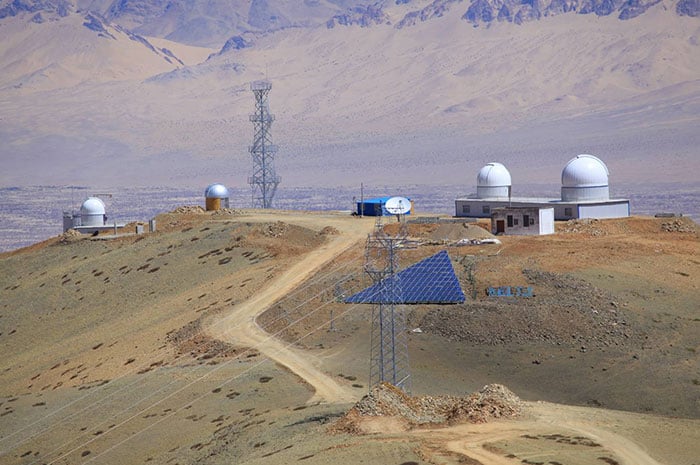Flash Physics is our daily pick of the latest need-to-know developments from the global physics community selected by Physics World‘s team of editors and reporters

Invisibility cloak is for foggy days
Invisibility cloaks are still mostly limited to the realms of fantasy and science fiction. While there have been breakthroughs in the field of transformation optics, the resulting cloaks have usually been restricted to microwave wavelengths – and cloaking can be disrupted by pulsed light-detection devices. However, work continues on cloaking, and in this latest research, scientists have designed a material that could hide an object in diffusive light. The team from the Universidad Pública de Navarra and the Universitat Politècnica de València, both in Spain, have focused on environments such as fog, smoke or cloudy water in which light does not propagate in straight lines but instead bounces around. The proposed material would use unimodular transformations that reroute light travelling in a specific direction around the region to be cloaked. Writing in Physical Review A, Carlos García Meca and colleagues show how the cloak could be made by layering two isotropic materials and discuss how pulsed detection devices would not interfere with its invisibility. If the material can be made, potential applications include thermal cloaking and preventing interference within high-speed communication devices. Much more about invisibility devices can be found in this June 2016 feature article “The quest for invisibility”.
New class of topological metals proposed by physicists

A new class of metals that could have a range of useful topological properties has been proposed by physicists in the US and Switzerland. Their work was inspired by the surprising discovery in 2014 that the electrical resistance of tungsten telluride increases as the material is subjected to stronger and stronger magnetic fields. This is unlike other materials in which the magnetoresistance saturates at a maximum value. Now, Lukas Muechler and colleagues at Princeton University, Yale University and the University of Zurich have focussed on the layered atomic structure of the material to try to explain this effect. Each layer has nonsymmorphic symmetry whereby the atomic structure is unchanged when the layer is rotated and then translated by a fraction of the lattice period. They then calculated all of the possible electronic states that are compatible with this symmetry and focused on those states that can be smoothly deformed into each other. These topologically equivalent states suggest that tungsten telluride belongs to a new group of materials called nonsymmorphic topological metals with very high electron mobility that is not affected by impurities – making the metals ideal for making electronic devices. Writing in Physical Review X, the team says that the topological nature of tungsten telluride goes some way to explaining some of its interesting electronic properties, including the magnetoresistance.
World’s highest telescope will hunt primordial “B modes”

Construction has begun on what will be the world’s highest-altitude telescope to study the cosmic microwave background (CMB). The Ngari-1 telescope is to be built at 5250 m above sea level near the Shiquanhe Observatory in Tibet and is expected to be complete by 2021. It will aim to detect primordial “B-mode” polarization of the CMB – the “curl” of polarized CMB light that is considered to be the smoking gun for cosmic inflation – a period about 10–38 s after the beginning of the universe. The telescope is a collaboration between the Institute of High Energy Physics (IHEP) in Beijing and Stanford University in the US, which is one of the leading institutions behind the BICEP telescope in Antarctica. Ngari-1 will observe the northern CMB sky that telescopes from the South Pole or in the Atacama Desert in Chile cannot see and will operate at 90 and 150 GHz. The telescope will contain thousands of microwave detectors, with the exact number depending on funding and the final design. As China does not currently have the capability to fabricate ultrahigh-frequency, high-sensitivity microwave detectors, Stanford is expected to design and build them.
- You can find all our daily Flash Physics posts in the website’s news section, as well as on Twitter and Facebook using #FlashPhysics. Tune in to physicsworld.com later today to read today’s extensive news story on how water behaves inside a carbon nanotube.



